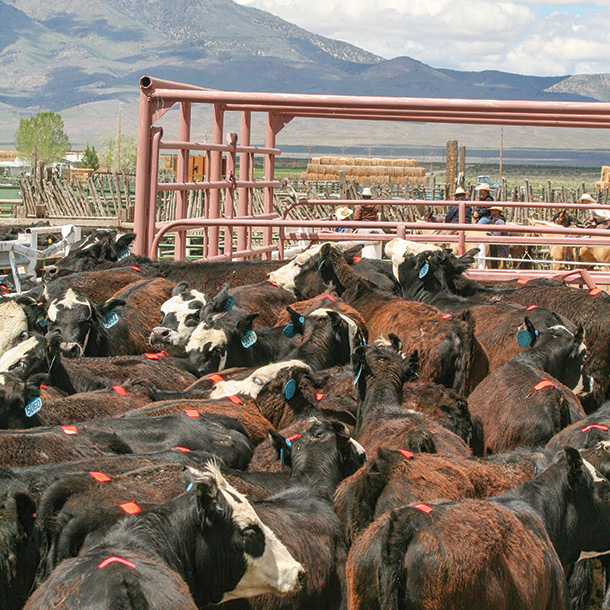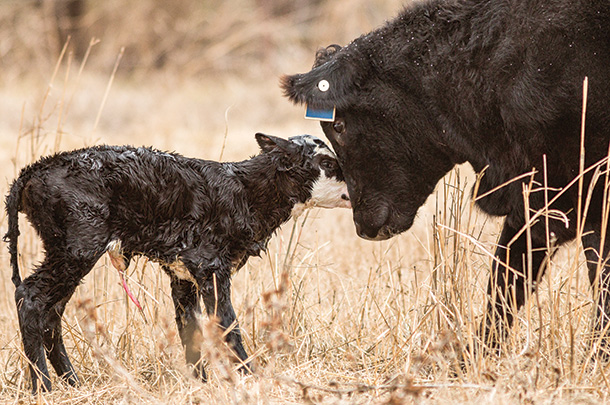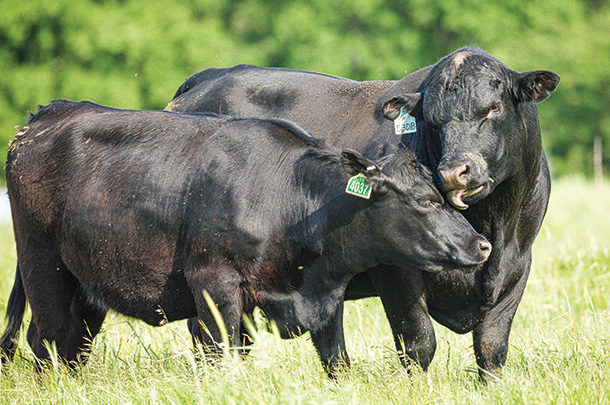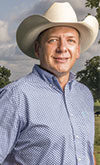So now is a good time to develop a reproductive checklist tailored to when your calving season is: spring-calving or fall-calving.
The fall reproductive checklist that I have put together includes these important elements, with considerations for both calving seasons in the descriptions that follow:
- Adjustments from last year
- Bull maintenance
- Herd health vaccinations
- Nutrition
- Pregnancy determination
- Heifer development
Start your checklist by evaluating reproductive performance of your cow herd from the previous year. Fall is a good time where adjustments can be made to the breeding program, regardless of when the breeding season is.
Adjustments from last year
The reason you adjust is to improve. So you have to ask yourself, am I satisfied with the results I had last year? By asking the questions below, you move yourself closer to reaching your production and/or economic goals faster. Specific questions you should consider asking include, but are not limited to:
- Is my calving start date where I want it to be?
- Were my pregnancy rates where I want them to be?
- What percentage of my cows/heifers calved in the first 30 days of calving season?
- How long was my calving season?
- Am I calving when I want or need to calve (i.e., during the forage growing season or not)?
- Did I use any reproductive technologies (A.I., estrous synchronization, embryo transfer, pregnancy determination), and was I satisfied with the results?
You don’t necessarily have to adjust everything at once, especially if you are not satisfied with the answers to a lot of the questions you asked. If that’s the case, choose the areas where you need the biggest improvement and go from there. Bite off a little bit at a time if you have to.
The rest of the items on your reproductive checklist will depend on when your calving season is. Let’s break the checklist down based on a fall- or spring-calving herd and discuss what needs to be evaluated for each.
Bull maintenance
Fall calving – Will your bulls come into the breeding season in the right body condition score (BCS)? Bulls should go into the breeding season in a BCS of 6 or better (scale of 1 to 9; 1 = emaciated and 9 = obese). This should not be a problem if you only have one breeding season in your operation. Those who have two breeding seasons and use the same bulls for both will have a harder time getting bulls back into breeding shape because of the shorter rest and recovery period that they have between breeding seasons.
 A herd of dams group up for A.I. protocols, with skilled hands behind them ready to work. Photo by Paul Marchant
A herd of dams group up for A.I. protocols, with skilled hands behind them ready to work. Photo by Paul Marchant Have you scheduled to get your bulls BSE (breeding soundness exam) tested at least 60 days prior to the breeding season? This is critical, because an infertile bull can impact whether 20 to 30 cows get pregnant or not, depending on the bull-cow ratio. Financially, a producer cannot afford that. Having that 60-day buffer before breeding begins allows you to find a replacement bull if your bull did not pass the BSE test.
Spring calving – Your biggest priority this time of year is getting those bulls on a plain of nutrition that will help them reach that targeted BCS of 6 by breeding time.
Herd health vaccinations
Fall calving – Herd health vaccinations and choosing vaccines is critically important to maximize the opportunity for high fertility rates. Timing of immunization is critical to success because some vaccines only produce short-term immunity. Knowledge of when each pathogen induces abortion is helpful in planning when and how to immunize the cow herd. Vaccinations should occur four to six weeks prior to the start of the breeding season in a fall-calving herd. If the cows are already on a modified-live vaccination (MLV) program given around weaning, check with your veterinarian to see if there are other critical diseases to vaccinate for prior to breeding.
Replacement heifers need to be vaccinated four to six weeks prior to the start of the breeding season.
Spring calving – If the spring-calving herd is set up on a MLV program, then vaccination usually occurs around weaning and/or pregnancy diagnosis. Remember, MLV vaccines given to naïve pregnant cattle (within approximately 30 days of breeding) may induce abortion of the fetus. If the herd is on a killed-vaccine program at pregnancy diagnosis, remember, killed vaccines have short-lived immunity. It is important that you consult with your local veterinarian on what type of vaccinations you should give and when, particularly for those diseases that cause reproductive failure during pregnancy and throughout gestation.
Nutrition
Fall calving – Pregnant cows should be in good body condition at calving (minimum BCS of 5) to begin cycling early on during the postpartum period. The increase in nutrient demands before and after calving put pressure on that cow’s ability to recover from calving sooner and begin cycling again. Good management practices allow a producer to increase nutrient availability during the last month of gestation, which is much easier in fall-calving cows grazing during the summer growing season non-lactating.
Cattle that calve in a poor body condition can still conceive; however, a cow in poor condition will typically conceive later in the breeding season and risk falling out of the herd because she eventually came up open. Once that cow (or heifer) has calved, it is critical that she maintains or increases body condition over time to ensure she resumes estrus prior to the breeding season.
Spring calving – The fall is not as stressful a time for spring-calving herds. After weaning their calves, those females have one to two months where maintenance energy requirements are the lowest during their production cycle. This is the time to make up for any loss in body condition prior to spring calving.
Pregnancy determination
There is not much to explain here. You either determine pregnancy in your herd around weaning time or not. Pregnancy determination is a powerful tool that gives you an early indication of your overall breeding season success. This information, followed by calving rate (number of actual cows that deliver a live calf divided by the total number of cows at the beginning of the calving season) and calving information (calving date and calving distribution) can paint an overall picture of what your herd fertility looks like.
 Cow with a new calf. Photo courtesy of Noble Research Institute
Cow with a new calf. Photo courtesy of Noble Research Institute
Fall calving – you should have either started calving or are about to start the process of calving soon. However, something we should pay attention to is how many females have not calved by the end of the planned calving season. This is an opportunity to determine if non-calvers are in fact pregnant (by conducting a pregnancy exam) and will calve at the very end of the calving season, or if they aborted the fetus sometime during pregnancy (if the cow/heifer was indeed confirmed pregnant early on). This will give you the opportunity to deal with those remaining females that were unknown in your mind.
Spring calving – Fall is a great time to conduct a pregnancy evaluation (around weaning) of spring-calving herds so you can identify those open cows early on. This can be done any time before, during or after weaning.
Heifer development
Not everyone keeps their own replacement heifers to develop. However, if you do, fall is a critical time to evaluate where you are in the heifer development phase and make sure each selected heifer is on track for the breeding season.
Fall calving – In these herds, heifers should be close to halfway through their pre-breeding development period. Heifers should be developed to reach 60%-65% of mature bodyweight at breeding. To achieve this, heifers should typically gain approximately 1.5 pounds per head per day from weaning to breeding. Now is the time to get a check weight and see if they are on track to reach that target breeding weight. This will allow you to sort out any heifers you think may not make weight by the beginning of the breeding season. Heifers that may be too light by the beginning of the breeding season have a risk of conceiving later in the breeding season.
Spring calving – For these herds, the weaning process is close and you should be determining which heifers to keep as replacements. Just remember, keeping a heifer that is too light will require higher daily gain to make up for the low weaning weight. On the other hand, heifers that are on the higher end of bodyweight are likely from bigger cows and thus will become bigger cows later in life.
In summary, now is the time to develop a checklist of reproductive management factors to run through this fall on your herd. This will help you plan better, organize more efficiently and identify the areas that need improvement or more of your management attention.









